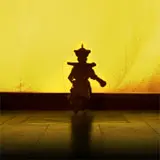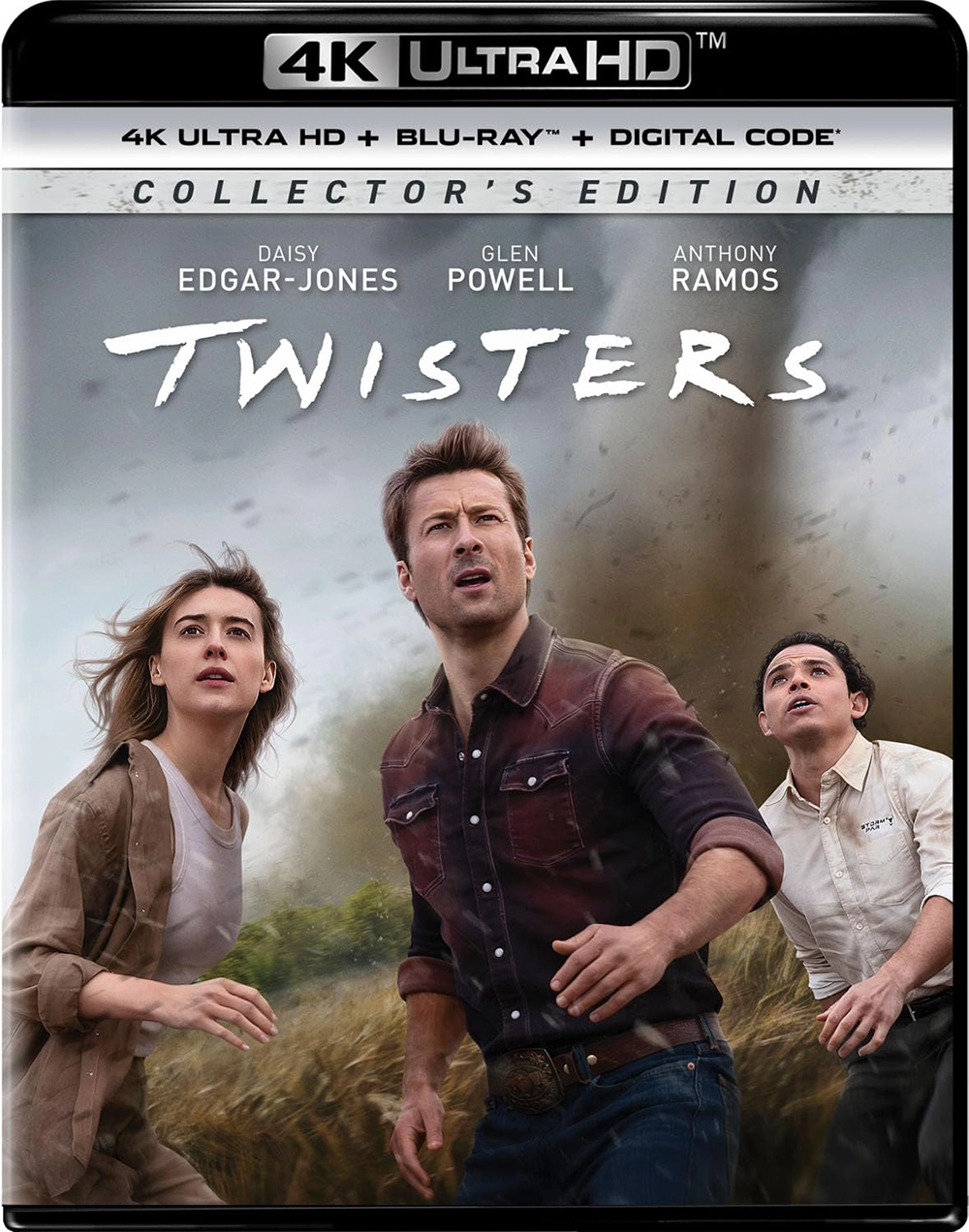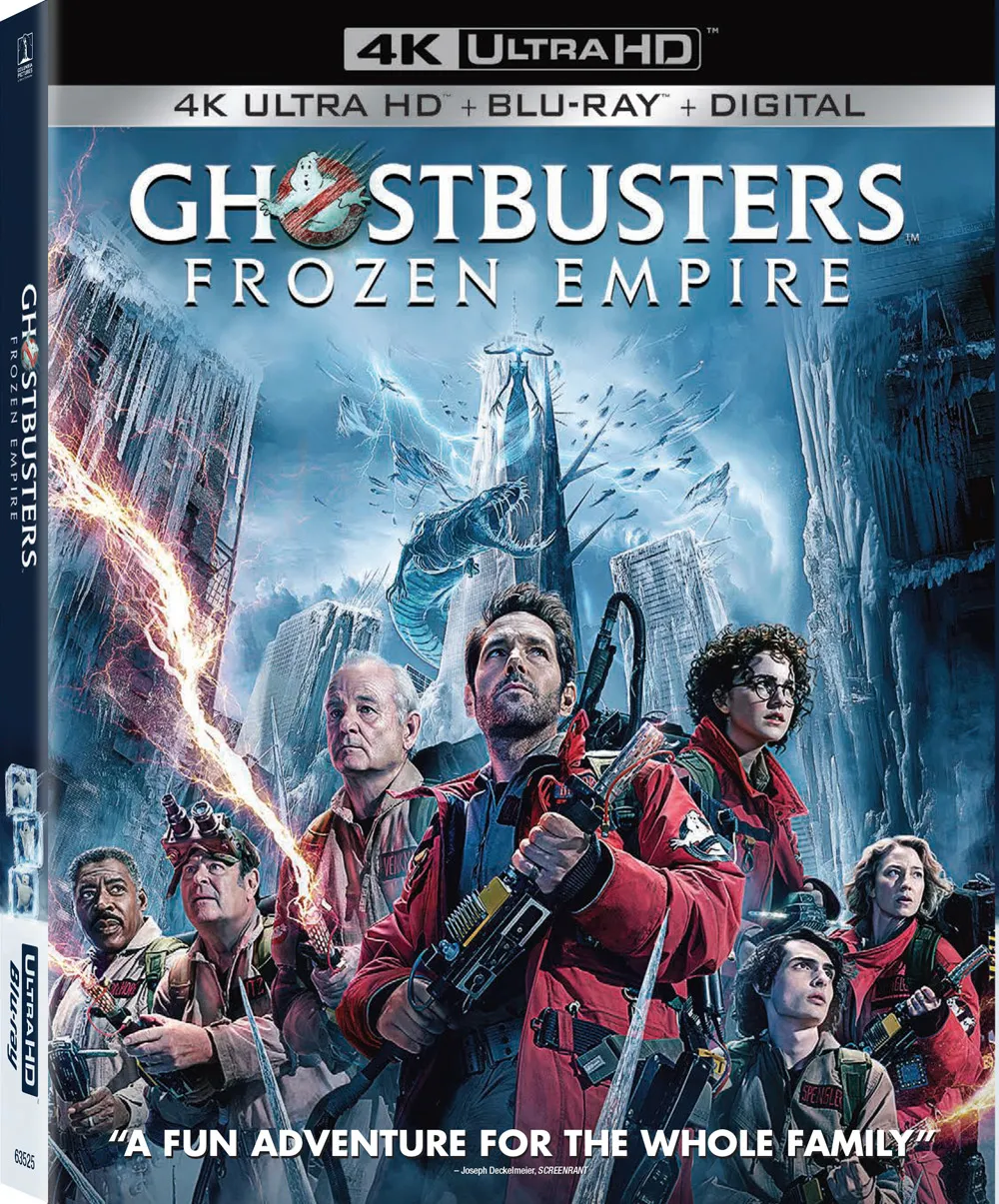 Before viewing Criterion’s new Blu-ray release, I had not seen director Bernardo Bertolucci’s The Last Emperor (1987) in several years. While I remembered the general story arc, what stuck in my mind were the sumptuous visuals. Bertolucci (Last Tango in Paris, 1900, The Sheltering Sky) is renown for constructing memorable cinematic imagery and it is arguable that The Last Emperor is his crowning achievement winning nine Oscars including top honors for picture, director, cinematography, editing, costume, set decoration, music and writing.
Before viewing Criterion’s new Blu-ray release, I had not seen director Bernardo Bertolucci’s The Last Emperor (1987) in several years. While I remembered the general story arc, what stuck in my mind were the sumptuous visuals. Bertolucci (Last Tango in Paris, 1900, The Sheltering Sky) is renown for constructing memorable cinematic imagery and it is arguable that The Last Emperor is his crowning achievement winning nine Oscars including top honors for picture, director, cinematography, editing, costume, set decoration, music and writing.
To its credit, the film is for the most part historically accurate and details the life of Pu Yi (John Lone as an adult), the final emperor of China. It opens in 1950 with Pu Yi’s delivery to the Chinese communists for “rehabilitation” and from there flashes backward and forward in time to encapsulate the period from his coronation at age three in 1908 to his death in 1967. The character’s life is intertwined with the historical backdrop of China’s political and cultural revolutions from the end of Imperial rule through the formation of a republic and the influence of communism on the nation.
The story works on a personal level driven by themes of imprisonment and isolation; from the main character’s discovery that he is constrained from leaving “The Forbidden City” where his reign as emperor is mostly a courtesy allowed by the newly formed Republic of China through becoming the “puppet” leader of Japan controlled Manchukuo to his incarceration under Mao’s regime. Pu Yi eventually finds freedom not as much from his physical constraints but more so from escaping his manufactured identities when he eventually realizes happiness as a simple gardener.
Though the details of Pu Yi’s life are interestingly portrayed, the film triumphs based on Bertolucci’s visual language which is channeled through the skilled cinematography of Vittorio Storaro and production designer Ferdinando Scarfiotti. There are many moments where I would find myself forgetting the explicit narrative while being drawn into the hypnotic cinematic composition. The film is infused with a use of color and lighting that tells the story as much as the narrative and more successfully so in my opinion.
There are probably very few instances where the onscreen creations were not precisely constructed ahead of time and the effort pays off. Rather than being contrived, the attention to detail applied to the visual imagery through particular arrangements, lighting, costumes and set pieces feels exceedingly natural. Moments such as the three year old emperor running into glowing yellow sheets to expose the courtyard in the Forgotten City or Pu Yi maneuvering under bed sheets with his wife and mistress contain such a sense of momentum that you are drawn into the depth of the image. This striking film deserves all the praise received for its technical and artistic proficiency.
When Criterion released The Last Emperor on DVD early in 2008, it included both the theatrical and extended versions. The Blu-ray Disc release contains only the former. While it would be nice to have both in high-def, given a choice I will take the theatrical. The longer cut has its benefits such as fleshing out the transformation that allowed Pu Yi to accept responsibility for his life but alters the pacing in a manner that can override its value. For the record, the extended version was constructed for television and is not the “director’s cut” as previous publicity such as the Artisan DVD release states.
Criterion follows their previous trend of providing their Blu-ray releases in a cardboard case and slipcover. The included 16 page booklet (cut down from the 96 page booklet with the DVD edition) contains an essay on the film by David Thompson.
The Last Emperor arrives on Blu-ray with an AVC encoded 1080p transfer and 2:1 aspect ratio. There has been controversy around the ratio as this is not the 2.35:1 in which it was originally exhibited. It is the contention of cinematographer Vittorio Storaro that 2:1 should be the standard used to minimize compromising image quality for home video and has stated that The Last Emperor is the first film he specifically shot for this ratio.
Criterion honored the filmmaker’s wishes, and we have to take what we are given even through some visual information is lost on the left and right of the image from earlier presentations. Storaro even reformatted Apocalypse Now to 2:1 for its DVD release, and we will most likely get the same results for its eventual Blu-ray. Any lingering complaints about the framing will soon be forgotten once you delve into the beauty of the transfer.
I was mesmerized by the imagery when I first saw the film in the theater and after watching the excellent Criterion Blu-rays of Bottle Rocket and The Third Man, my expectations were high for this release. I was not disappointed as this is another superlative example of high-def breathing new life into a classic catalog title which looks the best it has since its theatrical exhibition.
The only deficit I can point out is rare print damage throughout that will probably not be noticed, but the final scene does have what looks to be an extended scratch at the bottom of the image that must have carried over from the negative. This is a small complaint compared to the benefits delivered by this transfer.
The image is not razor sharp, but this is due to the shooting style rather than any deficit in the transfer that Storaro supervised and Bertolucci approved (similar “criticisms” were made against the recently restored Godfather high-def transfers). There is amble fine object detail such as in close-ups of facial features or the intricacies of the myriad of costumes and set pieces utilized. The prominent grain structure is kept wonderfully intact and points to a lack of DNR being applied.
As previously stated, the use of color carries if not outright conveys the story, and this more than anything else is where this transfer shines. The screen is bathed in distinct lighting that, depending on what part of Pu Yi’s life we are witnessing, precisely portrays the psychological and emotional mood. The high-def presentation of the deep stable hues (red, yellow, blue, orange and black are prominently used) and specific lighting choices really do this film justice.
The soundtrack is provided in two channel 24-bit DTS-HD Master Audio. This stereo mix is very well balanced with a good sense of openness and separation between sound elements. The musical score by composers Ryuichi Sakamoto, David Byrne and Cong Su is faithfully reproduced integrating well with the visuals, and dialog comes through crystal clear.
While I would have been interested to hear how a surround mix might have served the soundtrack, Criterion have followed their policy of only providing the original audio for a film, and this lossless track does a very satisfactory job. English (SDH) subtitles are available.
All the extras from the 4-disc DVD release are included that comprise over five hours worth of supplemental material not counting the commentary. While I am impressed at the extent of the information included, it can be a chore to try to take it all in. We are provided newly created content comprising the “making of” feature, David Byrne interview and historical background piece with the rest of the supplements being archival pieces that often attempt to explicate the creative process behind the movie.
The older extras have video framed in 4:3 fullscreen, which was standard for television at the time and fairly mediocre quality that probably could not be improved much from any re-mastering effort. All extras are in standard definition utilizing MPEG-2 encodes with the newer content using two channel audio and the rest having a mono track.
Commentary – Bernardo Bertolucci, producer Jeremy Thomas, composer/actor Ryuichi Sakamoto and screenwriter Mark Peploe recorded this feature-length commentary in 2003 and 2007, which was constructed into a single track. Considering this was edited together it feels fairly seamless. It is the extreme opposite of many lightweight commentaries given for popular films and contains ample detail about production, background and inspiration though little humor or entertainment value. It can be dry at points, but if you get bored you can always enjoy the visual mastery of the film.
Making of the Last Emperor (45:05) – This is mostly in English with some parts in Italian with English subtitles. The editor, cinematographer, director of photography, set designer and costume designer all give input. This is probably the strongest extra that manages to give a good amount of detail with a slightly better flow than the commentary.
The Southbank Show (1:06:03) – An episode of the British television show celebrating its 10th anniversary in 1987. It was shot on-location in Beijing during the making of the film with stretches without dialog or narration where you take in the day-to-day life of the shoot. We get to see many interesting behind the scenes moments on set.
Interview With David Byrne (25:05) – David Byrne (of Talking Heads fame) is one of the three composers for the film. He details working with Ryuichi Sakamoto and why certain compositional choices were made for particular moments in the film. His production notes are also given in an overview.
The Italian Traveler: Bernardo Bertolucci (53:03) – A piece shot around the time of the film’s release that mostly deals with the creative process of the director. The structure on this feature is so loose to almost seem rambling at points. It has a very artistic feel and works more as an expression of Bertolucci’s creative process than as an explanation. Dialog is in Italian and possibly some French with English subtitles.
Postcards From China (8:02) – Video shot by the director during the scouting for locations. Explicit dialog is in Italian with an English commentary from Bertolucci.
Trailer (2:36) – A 4:3 letterboxed version of the trailer exhibiting very poor quality that I can only assume was the best version available.
Bernardo Bertolucci’s Chinese Adventure (50:53) – A feature by Paolo Brunatto made in 1986 during the filming of the movie. It is in Italian with available English subtitles with the aforementioned poor video quality. It has a relaxed feel and delves into the mindset of Bertolucci making the movie, and much of the footage is taken from the shooting on set.
The Late Show with Jeremy Isaacs (30:35) – An interview with the director in 1989 discussing the Oscar wins for the film. Bertolucci mentions how he has little concern for winning awards and does not fit into the mainstream Hollywood format. The interviewer at times seems to psychoanalyze the director even asking him at one point to talk about his mother.
Beyond The Forbidden City (45:15) – Cultural historian Ian Buruma gives a background on the historical changes that form the backdrop of the movie. It is interesting to fill in some context not made explicit in the film and gives a different focus than all the “making of” features.
The Last Emperor can be viewed as an historical epic but I think it works equally well as visual poetry. It is one of the finest expressions of Bertolucci and Storaro’s collaborations and a truly mesmerizing cinematic offering.
Criterion has done justice to the film with a faithful transfer that brings out the best in the splendid use of color and lighting. While the extended version of the film is not included, I do not overly mourn its absence. The extras are extensive and should give much insight into the inspiration and creative process behind Bertolucci’s work. For fans of the film, this is the definitive version to own.
– Robert Searle


